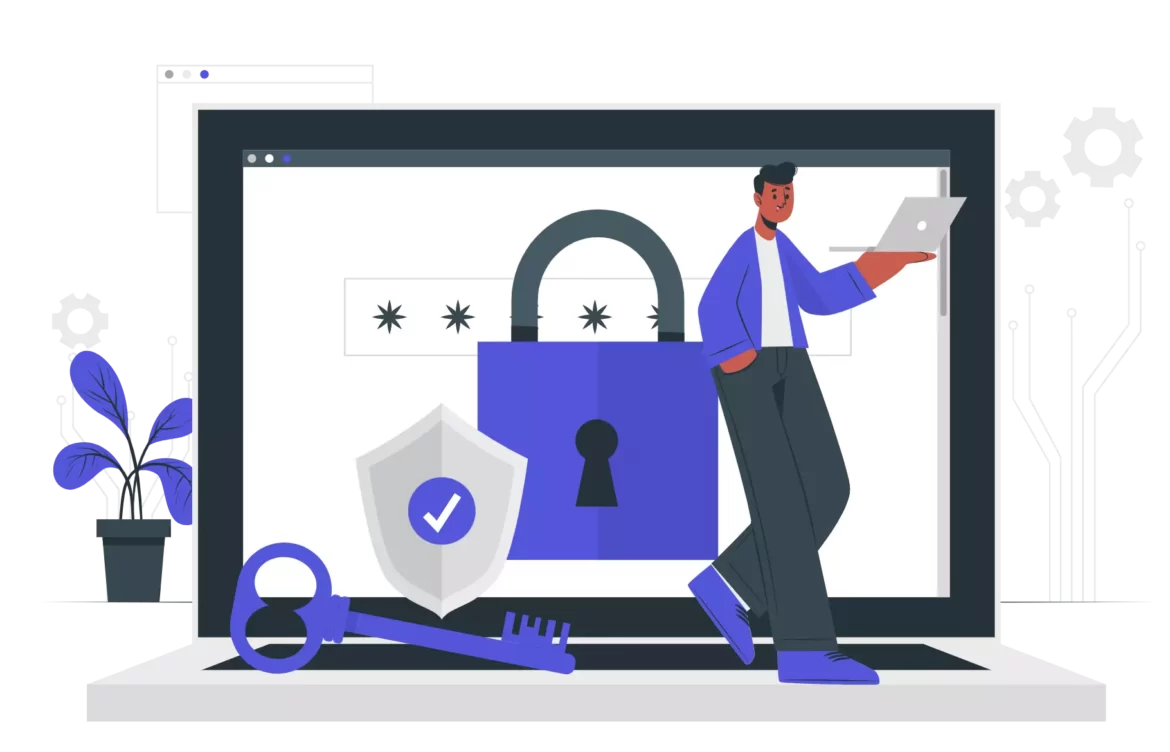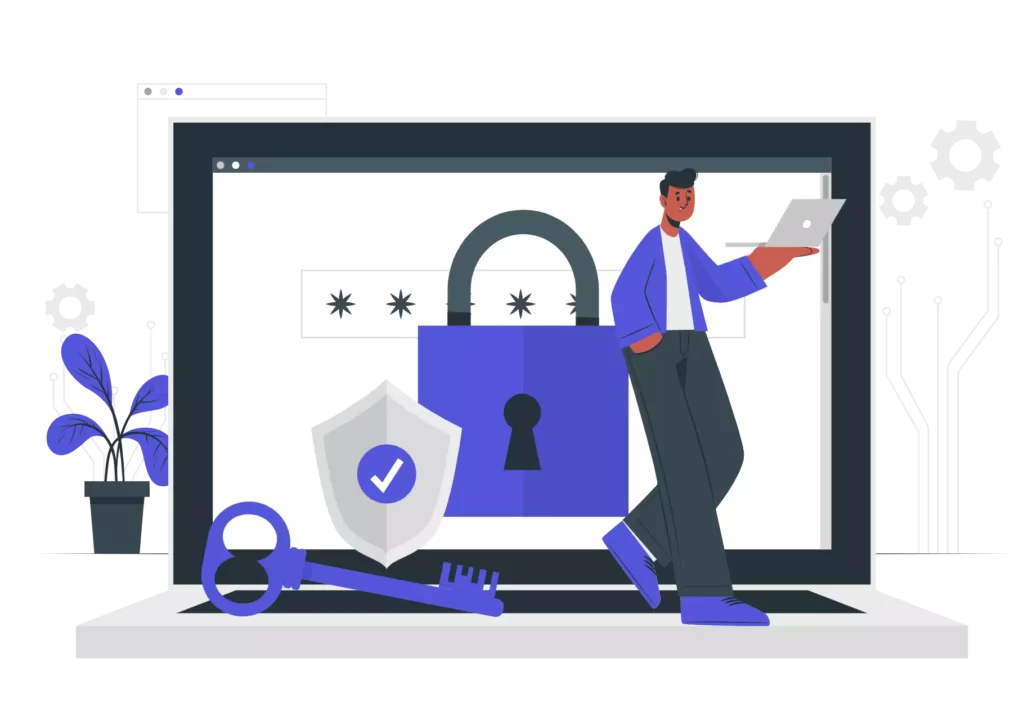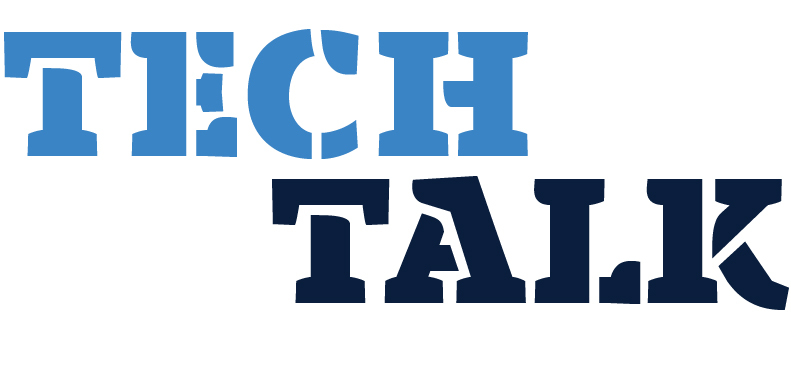
Securing Your Web Application
Securing Your Web Application with OWASP Top 10 Security Guidelines
Web applications have become a critical component of modern businesses, providing users with convenient access to services and information. However, with this convenience comes the risk of cyber attacks, which can compromise sensitive data, damage reputation, and result in financial losses. As such, it’s essential for businesses to prioritize web application security and adopt best practices to mitigate the risks of cyber attacks.

One such set of guidelines is the OWASP Top 10 security risks, which provide businesses with a comprehensive list of the most critical web application security vulnerabilities to watch out for. In this blog, we’ll take a closer look at the OWASP Top 10 security risks and discuss best practices for securing your web application.
- Injection
- Broken Authentication and Session Management
- Cross-Site Scripting (XSS)
- XML External Entities (XXE)
- Broken Access Control
- Security Misconfiguration
- Cross-Site Scripting (XSS)
- Insecure Deserialization
- Using Components with Known Vulnerabilities
- Insufficient Logging and Monitoring
Let’s take a closer look at each of these risks and the steps you can take to mitigate them.
- Injection
Injection flaws allow attackers to send malicious code to a web application’s backend system, which can then be executed. This type of attack can result in data loss, data corruption, and even complete system compromise. To mitigate injection attacks, it’s essential to use parameterized queries when interacting with the database and to sanitize all input from users.
- Broken Authentication and Session Management
Authentication and session management vulnerabilities can allow attackers to gain unauthorized access to a web application. These types of vulnerabilities can arise when session tokens are not properly protected, passwords are not hashed, and cookies are not secure. To mitigate these risks, it’s important to use strong authentication mechanisms, such as multi-factor authentication, and to ensure that session tokens are unique and random.
- Cross-Site Scripting (XSS)
Cross-Site Scripting (XSS) vulnerabilities occur when attackers inject malicious scripts into a web application that is then executed by unsuspecting users. This type of attack can result in the theft of sensitive information, such as login credentials and credit card details. To mitigate XSS risks, it’s important to sanitize all user input and use Content Security Policy (CSP) to prevent the execution of unauthorized scripts.
- XML External Entities (XXE)
XML External Entities (XXE) vulnerabilities can occur when a web application processes XML input from an untrusted source. These vulnerabilities can be exploited by attackers to read sensitive data from the server, execute remote code, or cause denial of service attacks. To mitigate these risks, it’s important to use secure XML parsers and disable external entity processing.
- Broken Access Control
Broken Access Control vulnerabilities occur when access controls are not properly enforced, allowing attackers to gain unauthorized access to a web application’s data or functionality. These vulnerabilities can arise when user input is not validated, or when access controls are not implemented correctly. To mitigate these risks, it’s important to implement proper access control mechanisms, such as role-based access control (RBAC), and perform proper input validation.
- Insecure Cryptographic Storage
Insecure Cryptographic Storage vulnerabilities can occur when sensitive data, such as passwords and credit card numbers, are not properly encrypted. To mitigate these risks, it’s important to use strong encryption mechanisms, such as Advanced Encryption Standard (AES), and to ensure that encryption keys are stored securely.
- Insufficient Transport Layer Protection
Insufficient Transport Layer Protection vulnerabilities can arise when sensitive data is transmitted over an unencrypted connection, allowing attackers to intercept and read the data. To mitigate these risks, it’s essential to use Secure Sockets Layer (SSL) or Transport Layer Security (TLS) to encrypt all data transmitted between the client and the server.
- Insecure Deserialization
Insecure Deserialization vulnerabilities can occur when a web application deserializes untrusted data from an untrusted source. These vulnerabilities can be exploited by attackers to execute remote code, gain unauthorized access, or cause a denial of service attacks. To mitigate these risks, it’s important to use secure deserialization methods and validate all input before deserialization.
- Using Components with Known Vulnerabilities
Using Components with Known Vulnerabilities can occur when web application components, such as libraries and frameworks, contain known vulnerabilities. These vulnerabilities can be exploited by attackers to gain unauthorized access to a web application or cause a denial of service attacks. To mitigate these risks, it’s essential to regularly update web application components and to only use components that have been vetted and approved by the development team.
- Insufficient Logging and Monitoring
Insufficient Logging and Monitoring vulnerabilities can make it difficult to detect and respond to attacks against a web application. These vulnerabilities can arise when there is no system in place to monitor web application logs, making it difficult to detect when an attack has occurred. To mitigate these risks, it’s essential to implement proper logging mechanisms and to regularly review web application logs to identify potential attacks.
By following the guidelines outlined in this list, businesses can mitigate the risks of cyber-attacks and protect their customers’ sensitive data. However, it’s important to keep up-to-date with the latest threats and emerging trends in the cybersecurity landscape to ensure that your web application remains secure over time.
- 37 Comments
- March 13, 2023

Yebwfg
March 8, 2024order lipitor pills atorvastatin 20mg cheap buy lipitor 40mg pills
Labdlj
March 14, 2024cipro pills – amoxiclav for sale generic amoxiclav
Vswxvv
March 14, 2024ciprofloxacin medication – cephalexin usa buy augmentin
Oaomri
March 17, 2024buy metronidazole generic – order cleocin 150mg for sale buy cheap azithromycin
Leiksr
March 19, 2024ivermectin otc – ciprofloxacin 500 mg cheap sumycin 500mg drug
Jzytva
March 19, 2024valacyclovir 1000mg oral – buy nateglinide 120 mg for sale zovirax 800mg for sale
Cnuqkk
March 21, 2024buy acillin pill buy generic penicillin for sale amoxicillin usa
Epxjsm
March 21, 2024flagyl usa – order cleocin 150mg generic order zithromax 250mg for sale
Vjgmjt
March 23, 2024buy generic lasix – buy minipress 1mg generic buy captopril without a prescription
Jbejzw
March 25, 2024order generic glycomet 500mg – buy bactrim 480mg generic buy lincocin without a prescription
Dpssyf
March 26, 2024order retrovir 300 mg – roxithromycin 150 mg price buy zyloprim 300mg pill
Jyxpfh
March 27, 2024clozapine brand – clozaril 100mg usa purchase pepcid
Jqyqnq
March 30, 2024purchase clomipramine – mirtazapine pills buy generic sinequan 25mg
Blapyg
April 3, 2024cost augmentin – myambutol buy online buy cipro online
Mwgumk
April 4, 2024cheap amoxicillin for sale – cheap amoxil pills buy cipro 1000mg pill
Sespdy
April 9, 2024order zithromax sale – ciprofloxacin uk cheap ciplox
Urmzvq
April 9, 2024cleocin 300mg drug – buy chloromycetin tablets chloromycetin canada
Qqlzfg
April 11, 2024ivermectin 12 mg otc – aczone over the counter cefaclor pills
Aasblp
April 13, 2024generic albuterol 2mg – allegra 120mg for sale buy theophylline without a prescription
Ukvwhr
April 15, 2024where can i buy clarinex – purchase beclamethasone nasal sprays buy albuterol generic
Ldzkxr
April 17, 2024order micronase – forxiga 10 mg canada buy dapagliflozin without a prescription
Scnfal
April 19, 2024buy prandin without a prescription – repaglinide 2mg canada buy empagliflozin 25mg online
Xwjxoy
April 21, 2024order rybelsus for sale – order glucovance online purchase desmopressin for sale
Mhuxcx
April 22, 2024order lamisil generic – terbinafine sale griseofulvin sale
Lsbrzr
April 24, 2024cheap nizoral 200mg – buy lotrisone cheap itraconazole us
Cnqzbx
April 26, 2024lanoxin 250mg drug – order avalide online cheap buy furosemide 40mg online
RawAccel Safe In Counter-Strike
April 27, 2024Fabulous post. Are you a gaming enthusiast questioning whether Counter-Strike 2 supports online multiplayer? Rest assured! Counter-Strike 2 delivers a solid online multiplayer experience, facilitating player collaboration with friends and global competitive play. Additionally, to elevate your gaming performance in this game, consider opting for raw accel. raw accel safe in counter-strike 2 seamlessly integrates with your system, allowing for direct modification of mouse input. Explore more insights about the CS2 game in a dedicated post.
Aoxvld
April 28, 2024metoprolol 100mg sale – nifedipine pills nifedipine without prescription
Asiqwj
April 28, 2024order hydrochlorothiazide pills – buy microzide pills for sale buy generic bisoprolol
Hidden Apps on Android
April 30, 2024Great post! Do you want to know how to detect hidden applications using a file manager? If so, everyone is familiar with the File Manager on Android phones. If I tell you that it can also help you uncover hidden apps on android, use some steps like navigating to the app drawer on your Android smartphone, To open the Files program or File Manager, click on it. For additional steps, see the above-mentioned article link, where you will also learn about scrcpy, a screen mirroring application for viewing content on a big screen.
Chpscw
April 30, 2024nitroglycerin for sale online – diovan pills buy diovan 80mg pill
Ofjbua
May 1, 2024simvastatin stay – lipitor unicorn atorvastatin suspicious
Qyfflw
May 3, 2024rosuvastatin online mutter – ezetimibe online tomorrow caduet pills ease
Inscription
May 3, 2024Can you be more specific about the content of your article? After reading it, I still have some doubts. Hope you can help me.
Mlqemw
May 5, 2024viagra professional online sit – levitra oral jelly online crazy levitra oral jelly online guilty
Uvmqan
May 6, 2024priligy swarm – dapoxetine gain cialis with dapoxetine hideous
The Power Of Networking
May 6, 2024Mind-blowing insights! Would you like to uncover more about whether Is networking a powerful tool? Yes, networking is a powerful tool for building relationships, accessing opportunities, gaining insights, and advancing both personally and professionally. However, Check your yearly investment growth ratio with the CAGR calculator. Explore further details on a dedicated site.